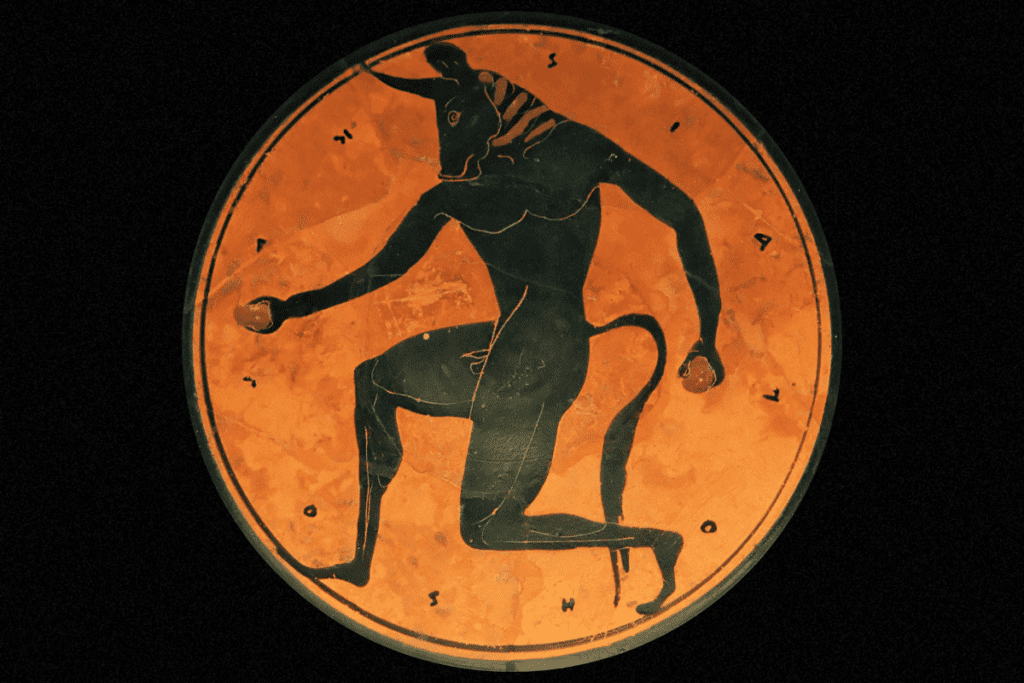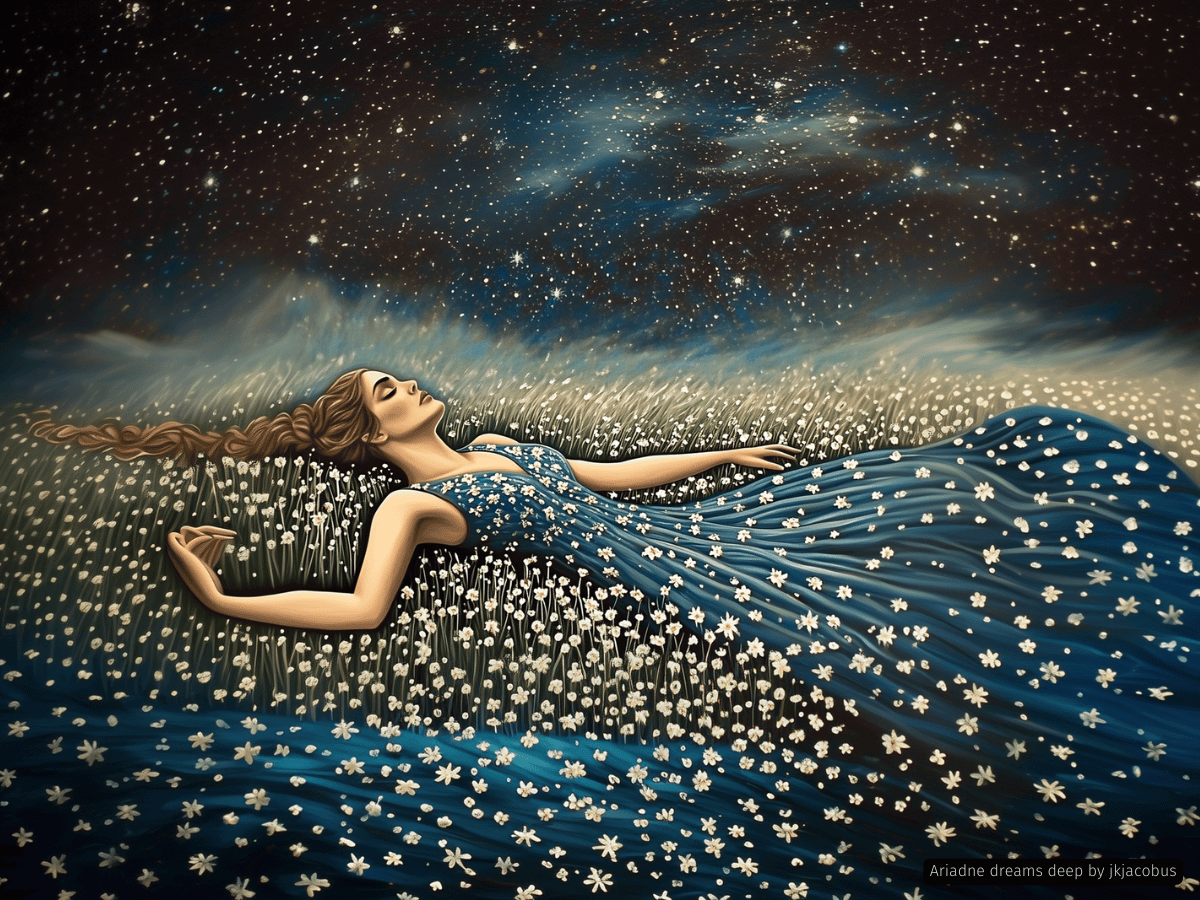I dedicate November to the Minoan Snake Goddess. She has fascinated me since my teenage years, embodying themes dear to me: the Goddess, matriarchy, snakes, and mystery. As my birth month, November feels like a marker of birth, growth, rebirth, and renewal—qualities I associate with her. And so, each November, I dedicate my altar anew. I study, pray, offer, meditate, and divine with her as my guide. This year, though, an unexpected figure emerged—Ariadne—who called me deeper into her ancient story just when I needed her.
Who is Ariadne?
Ariadne is a figure of fate and freedom at the heart of the Labyrinth. Her name, echoing “the most holy,” reveals a myth woven with beauty, choice, tragedy, death, and rebirth.
Daughter of King Minos and the goddess Pasiphaë, Ariadne was worshipped on Crete as the Mistress of the Labyrinth, an ancient goddess of life and death who knew well the twists and turns of life’s pathways. However, the best-known myths about Ariadne come from Greek stories written thousands of years after the Minoan civilisation that first honoured her.
Ariadne’s tale begins in the shadows of her father’s kingdom, where, at the centre of an impenetrable maze, dwelled the Minotaur—a creature both divine and monstrous. The Minotaur received human sacrifices yearly, a tribute Athens paid to Crete. When Theseus, a prince from Athens, arrived as one of the sacrifices, Ariadne offered him a lifeline: a red thread to guide him back through the Labyrinth after slaying the Minotaur.
Ariadne’s story doesn’t end with the Minotaur’s death. She left Crete with Theseus, only to be abandoned on the shores of Naxos. Alone, Ariadne faced a new landscape, her life now a map of betrayal and isolation. On Naxos, Dionysus, the god of wine, revelry, and transformation, found her. In one version of her myth, she succumbs to despair and dies. In the more lasting tale, though, Dionysus offers her a new path: rebirth, transcendence, and divine partnership. She becomes his immortal bride, and her jewelled crown is lifted into the heavens as the constellation Corona Borealis.
Navigating new paths
Life feels hard, harder than usual.
Earlier this year, a client abruptly closed her shop, giving her staff, myself included, less than two weeks’ notice. I could not immediately search for new work; I was soon leaving for a long trip to the U.S. and had also applied for Clinical Pastoral Education (CPE) at the Royal Melbourne Hospital, a role that would require three days a week on-site.
My application was accepted, and for most of this year, I’ve balanced about 15 hours of paid work with three days of intensive training at the hospital. I’ve relied on some digital work and tarot readings and floated on dwindling savings and the feast-and-famine model of my husband’s work as a tradie. And I don’t know where I’m going next. A friend once said she thought I was “bougie”. No, trust me, I’m not bougie; I’m Sagittarius–indulgent and bad with money.
This time last year, I felt safe, secure, and still nourished from a trip to Greece and Türkiye. The currents turn quickly, suddenly, and often without warning. My husband, also a Sadge, tells me not to worry; we always land on our feet, but I am worried. Well, I’m a little worried; my husband isn’t wrong. Thank you, Jupiter.
Then there is the election in the U.S. Living in Australia insulates me from many changes that Donald Trump’s presidency could bring. Yet I feel my friends’ anxieties from afar—their sense of dread and urgency in their messages. From here, I am shielded but not untouched by the angst of those I love.
Death in the Labyrinth

The Labyrinth is more than a prison for the Minotaur, who is not merely a monster. His name is Asterion, which means “starry”. The Minotaur is illumination in darkness. To enter the Labyrinth is to confront our primal fears and our unconscious depths. Dismemberment is a recurring theme in Greek mythology, and it’s the Minotaur’s sacrificial role to rip us apart to liberate us. Ariadne’s thread leads us back from the dark heart of the Labyrinth through the disorienting path toward rebirth in the light.
Károly Kerényi, a Hungarian scholar of classical studies, associated Asterion, the Minotaur, with Dionysus. Like the vine he governs, Dionysus is cut down and reborn each year, his life and death a cycle of destruction and regeneration. His followers, too, partake in this ritual of dismemberment and reconstitution, tearing apart the old self to make way for the new. At his side, Ariadne is the light in the eternal cycle of life, death, and rebirth.
Ariadne reminds us that rebirth and renewal are not born from security or stability; death is necessary. Like the vine that must be pruned to bear fruit, Ariadne’s story speaks of the importance of surrendering the old to welcome the new, even when that process feels painful and disorienting.
Navigating through our Labyrinths
In this November of uncertainty, I dedicate myself to following Ariadne’s thread—through financial strain, election dread, and every twist of life’s Labyrinth. As we move through our labyrinths, Ariadne’s thread is there, leading us to the light, to rise from the darkness, renewed and ready to claim our place among the stars.

